Aromatic, smoky, savoury & a little sweet, Cantonese classic dish Char Siu (Chinese BBQ pork) is one of the tastiest ways to roast pork. Try my easy recipe!
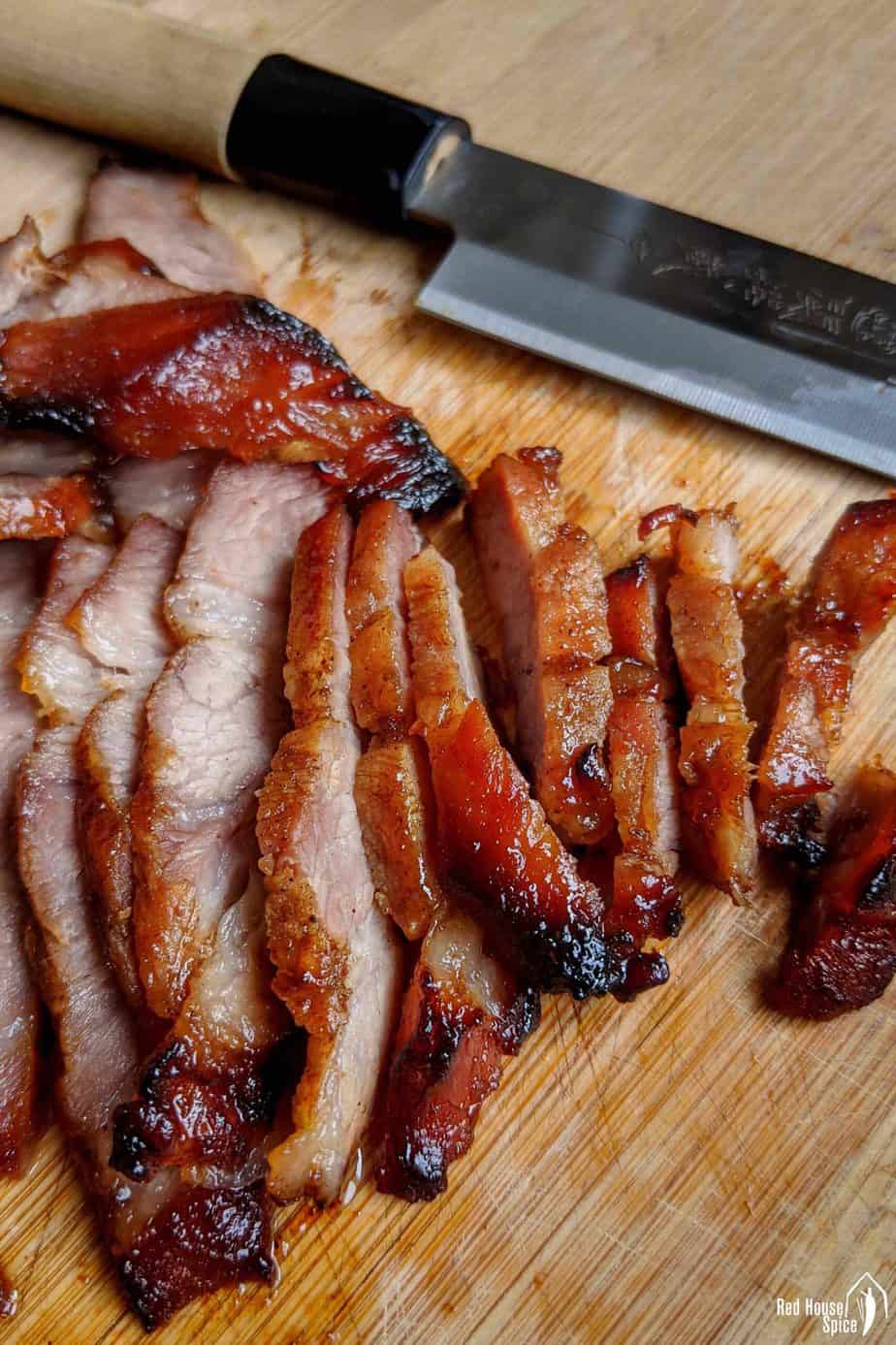
Chinese cooking seldom involves an oven, but there are exceptions, such as Char Siu (叉烧), the signature dish of Cantonese cuisine. Today I’m sharing an easy version of this delicacy that tastes as good as what you get from restaurants.
Jump to:
What is Char Siu
Char Siu (叉烧), also knows as Chinese BBQ pork, is a type of roasted pork originating from Cantonese cuisine. Traditionally, the marinated pork is skewered with long forks and roasted in an oven or over an open fire. That’s where its Chinese name Char/叉 (fork) Siu/烧 (roast) comes from.
Having an aromatic, sweet, savoury and smoky flavour, Char Siu can be enjoyed on its own, as the centrepiece of a multi-course meal, or with some staple food forming an all-in-one dish, such as Char Siu Rice (叉烧饭), Char Siu Noodles (叉烧面) and Char Siu Bao (叉烧包).
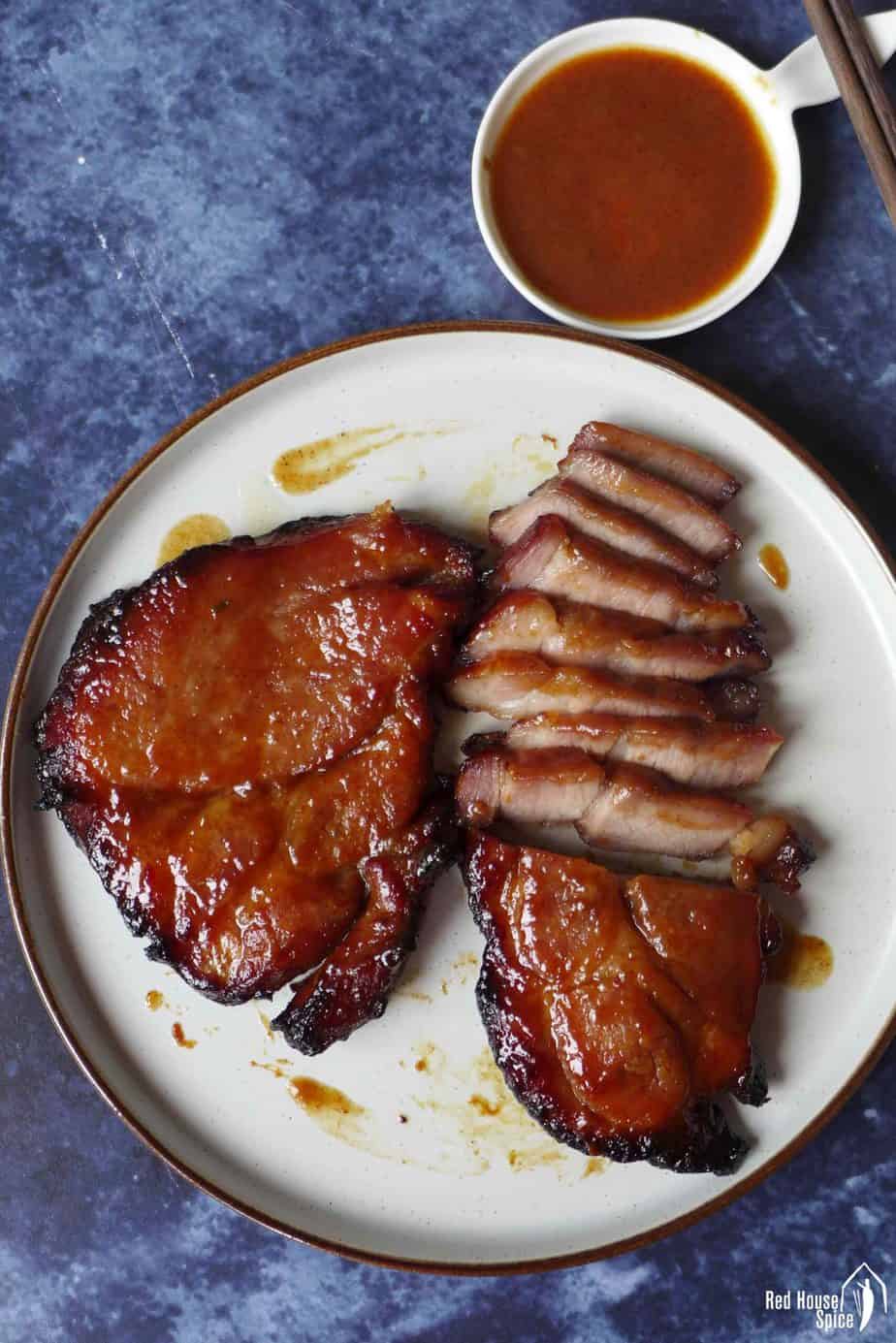
The workflow
Char Siu may look like a sophisticated dish to cook. It actually involves very simple procedures. There are no special skills required (unlike dumpling folding or noodle pulling). Once you’ve got all the ingredients in hand, what you need to do is simply follow the temperature and timing instructions. Here is the summary of the process:
- Mix all the ingredients for the marinade.
- Marinate the pork overnight in the fridge.
- Roast the meat on a wire rack in the oven. Take out about halfway to flip over and brush more marinade.
- Towards the end, brush the honey mixture then roast under higher temperature for a short while to produce a nice glaze.
Choose the cut
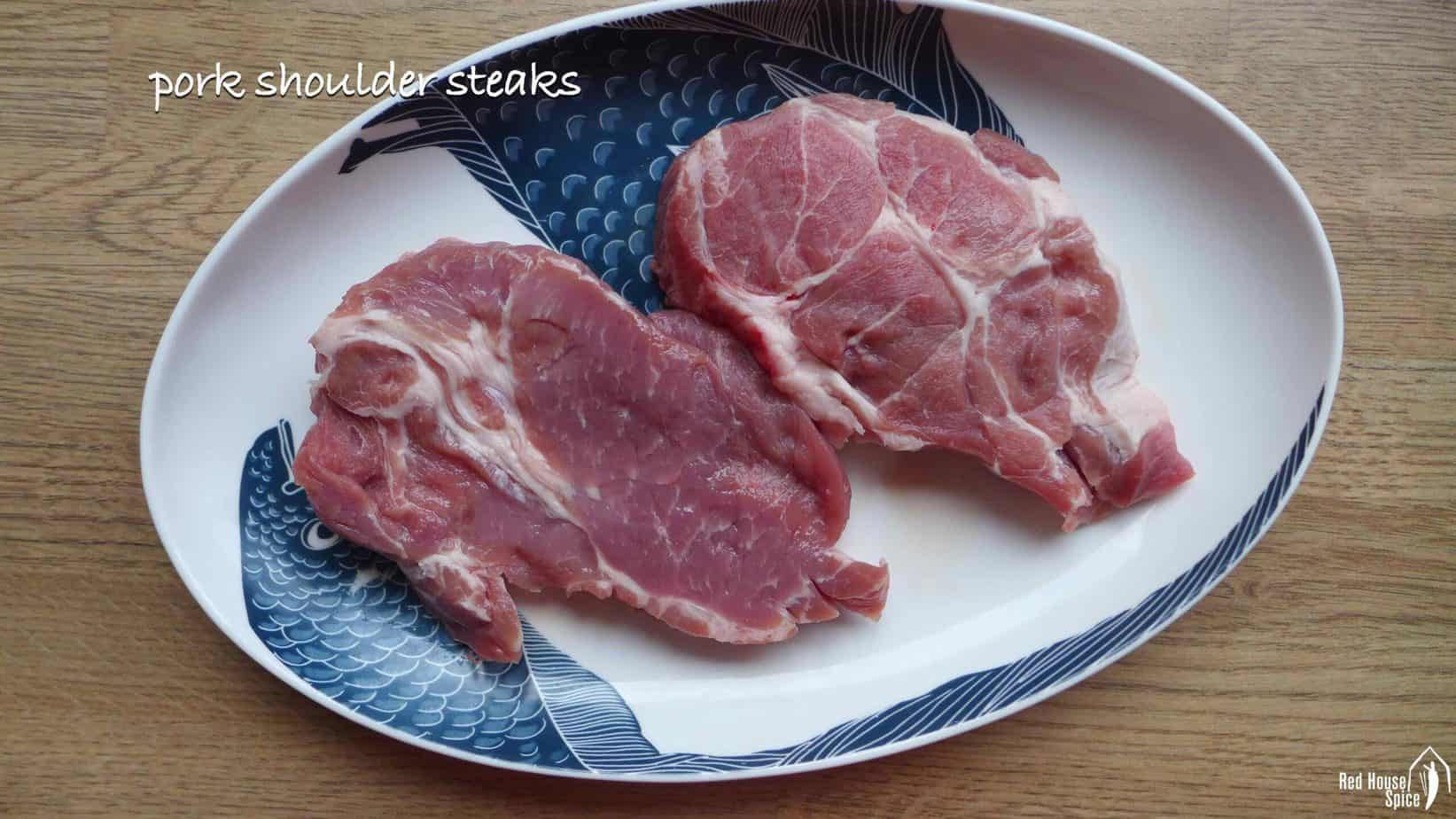
According to traditional recipes, Méi Tóu Róu/梅头肉 is the ideal cut of pork for Char Siu. It refers to boneless pork shoulder (aka pork butt/Boston butt) which comes from the upper part of the shoulder from the front leg of the pig. This part of pork has a small amount of fat so it’s not as lean as pork fillet yet not as fatty as pork belly.
For my recipe, I use pork shoulder steaks which are boneless and thin. It takes less time to cook than chunkier pieces. Also, I find that the marinade penetrates more easily thus the cooked Char Siu becomes tastier.
Note: If you prefer bone-in meat, try my recipe for Char Siu Ribs, or Char Siu Chicken.
Make the marinade
The ingredient list
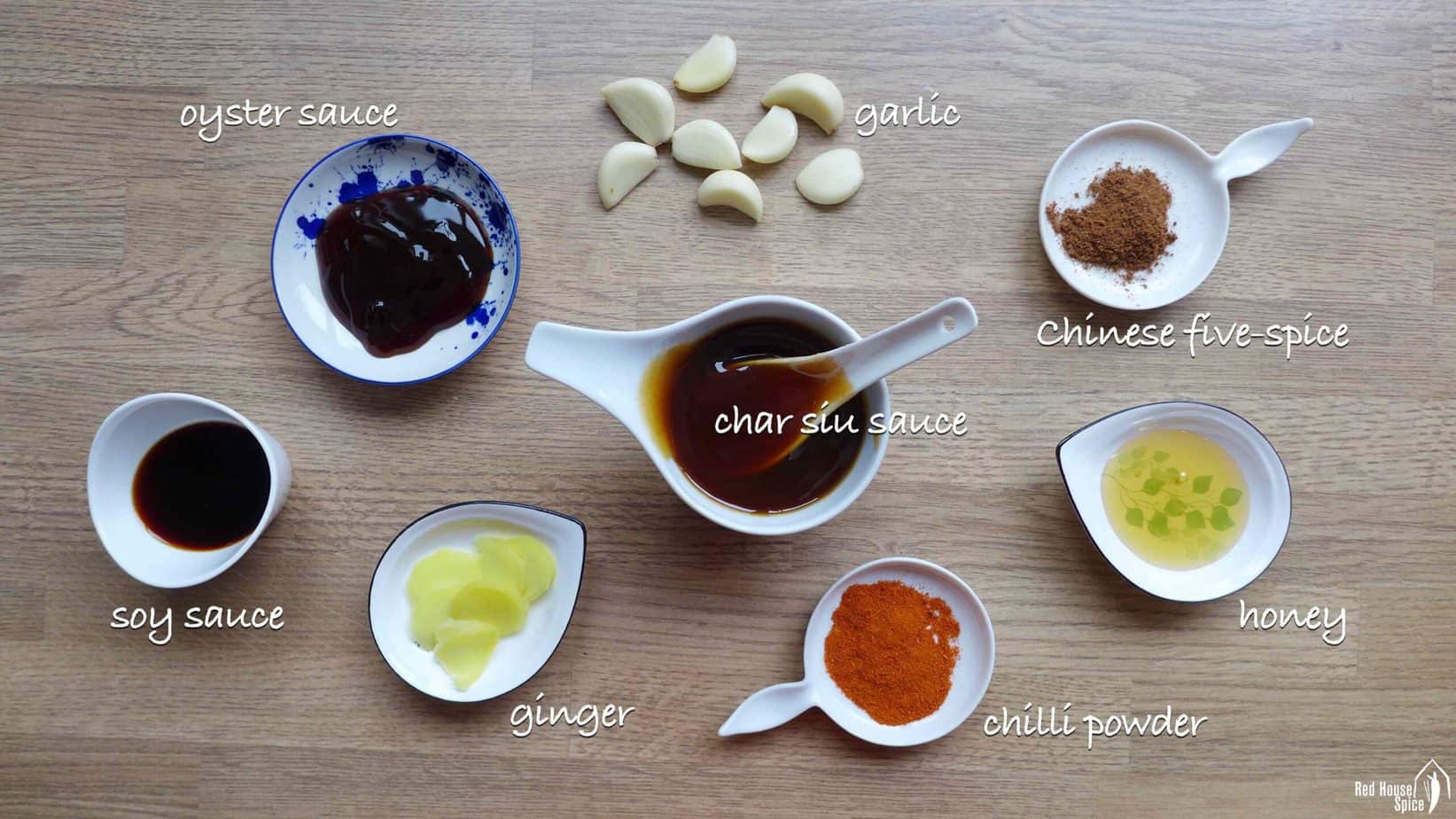
Here comes the most important part of Char Siu making: marinate the pork with a well-balanced sauce. I’ve tested several different mixtures and finally decided to share the following one with you.
- Char Siu sauce is a key ingredient. I use Lee Kum Kee (李锦记) Char Siu sauce which is widely available in Chinese/Asian stores.
- Oyster sauce adds a hint of seafood umami taste.
- Light soy sauce
- Chinese five-spice powder enhances the depth of the flavour.
- Garlic & ginger provide an extra kick.
- Chilli powder is entirely optional. It’s not called for in traditional recipes but purely my personal preference. I highly recommend it if you usually eat spicy food. It provides a hint of spiciness which balances the sweetness of Char Siu.
Make the meat red
You might have noticed that my Char Siu doesn’t have the reddish colour that you usually see on shop/restaurant bought one. If you are after that particular look, please feel free to add a little colouring agent to the marinade. You may use either red yeast powder/红曲粉 or regular red food colouring.
Let the flavour penetrate
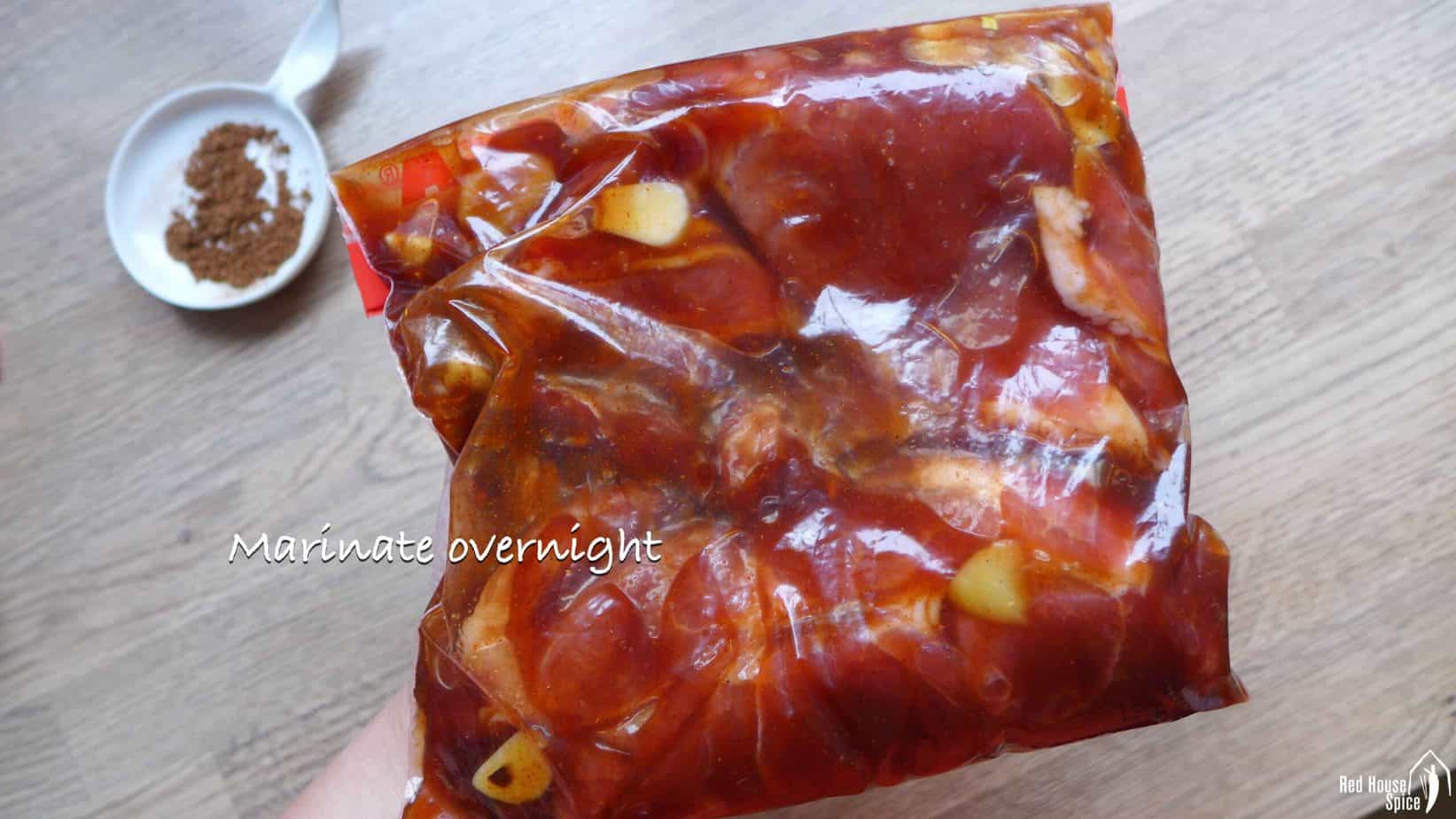
To achieve the best taste, you need to make sure that the flavour of the sauce penetrates into the meat as much as possible. Here are two tips:
- Use a resealable plastic bag. Put the meat inside. Add all the ingredients for the marinade. Squeeze out the air and seal the bag. Rub the bag with your fingers to make sure every part of the meat is in touch with the sauce. Keep in the fridge.
- Leave to marinate overnight. I usually prepare the marinade in the evening, then roast the meat the next day for dinner. Alternatively, you may start marinating in the morning and cook in the evening.
How to roast
Use a wire rack
Marinated pork needs to be roasted on a wire rack so that it can be cooked evenly. Also, the excess sauce/juice can drip off freely during roasting. It’s important to have some water underneath to collect the drippings thus prevent smoking/burning. Here are two options:
- Use a baking tray with a wire rack placed inside. Fill the tray with hot water (lower than the rack) then put the pork on the rack (as shown in the image below).
- Alternatively, place a tray filled with hot water at the bottom of the oven. Then place the meat on the middle rack of the oven.
Temperature & timing
Now it’s time to roast the meat in the oven. It takes me a little over 30 mins from start to finish. Let’s break down the entire process into four stages:
- The first 15 mins. Roast at 425°F/220°C/Fan 200°C. I highly recommend you use the fan-assisted function if available. It’s more efficient and cooks more evenly.
- A future 10 mins. Take the meat out and flip it over. Brush some marinade then put back to the oven. Remain the same temperature.
- 5 mins at a higher temperature. Turn the oven up to 460°F/240°C/Fan 220°C. Take the meat out and brush with the honey and marinade mixture. Put back to the oven.
- The final 3 mins. Brush the honey mixture on the other side of the meat. Roast for 3 mins at high temperature.
Watch & adjust
It worth noting that the roasting time may vary slightly since different ovens perform differently. The weight and size of the meat would also affect the required cooking time. Use my instructions as a general guide. Be attentive at your first attempt, check the colour change and adjust the time accordingly (It’s normal to have a little char around the edge of the meat).
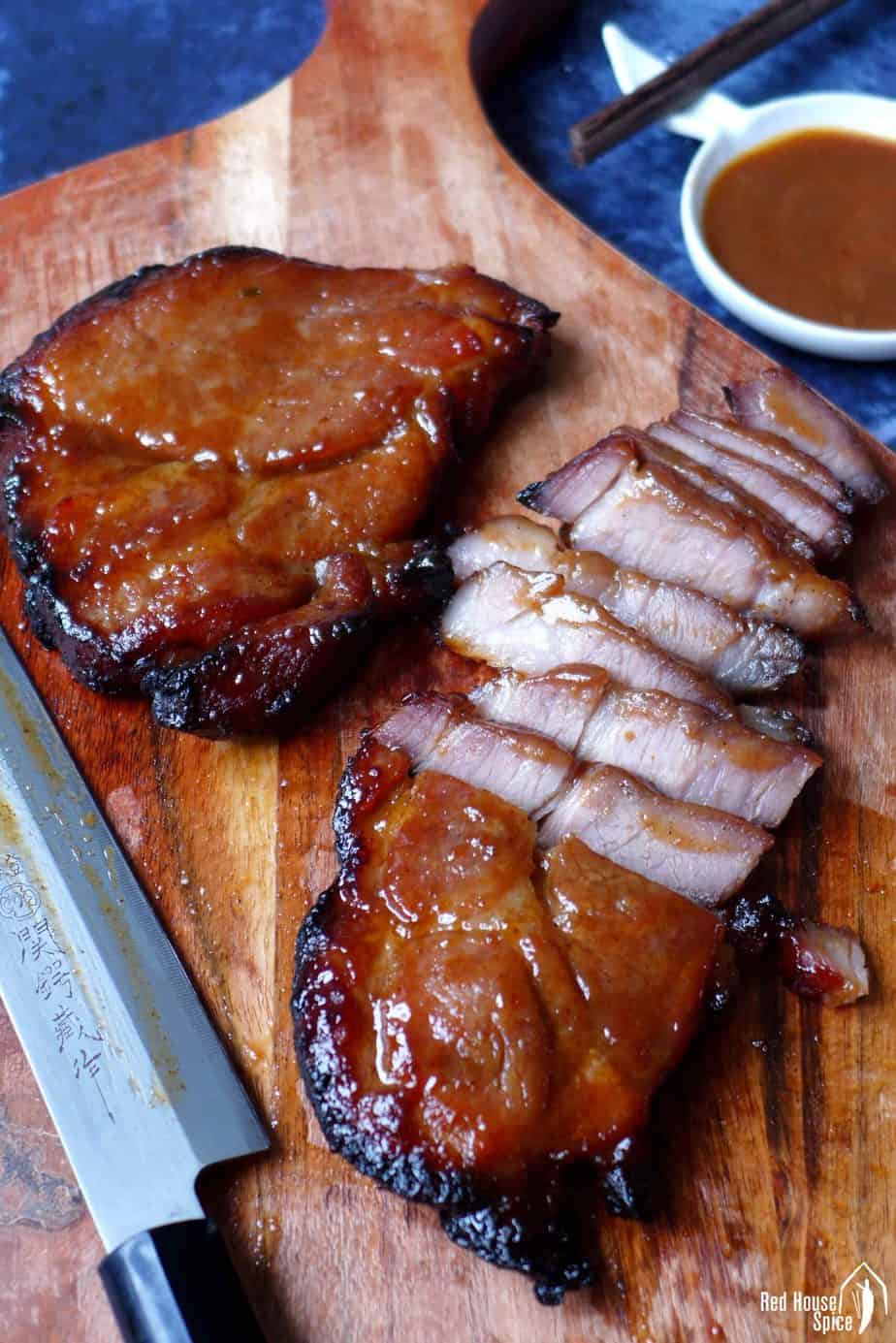
How to serve
After you take the Char Siu out of the oven, leave it to rest for 5 mins or so before slicing (trim off the charred edges if you wish). Serve it warm with your preferred accompaniment. I have a few serving ideas:
- Serve with a bowl of plain rice along with lightly stir-fried or blanched vegetable.
- Use it as filling for Char Siu Bao (see image below).
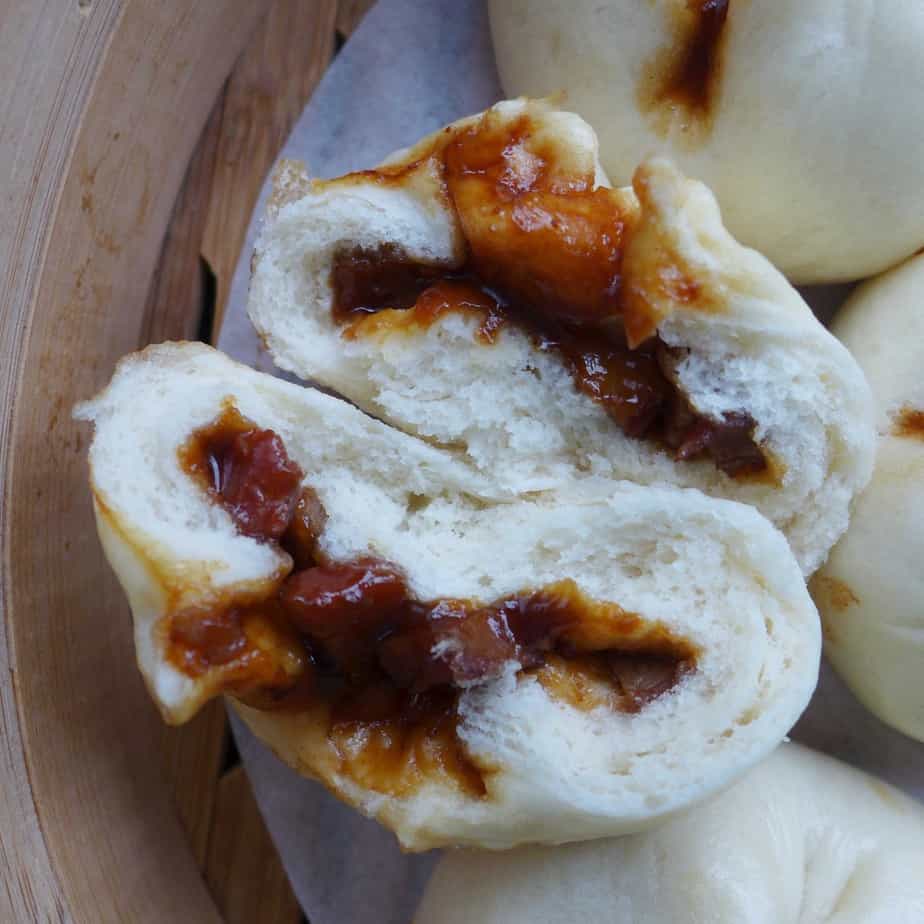
- Make fried rice with it. For example, you may replace the protein ingredients with Char Siu in these dishes: Soy Sauce Rice, Chinese Sausage Fried Rice, Easy Pineapple Fried Rice.
- Use it in fried noodle dishes, such as Singapore Rice Noodles (see image below).
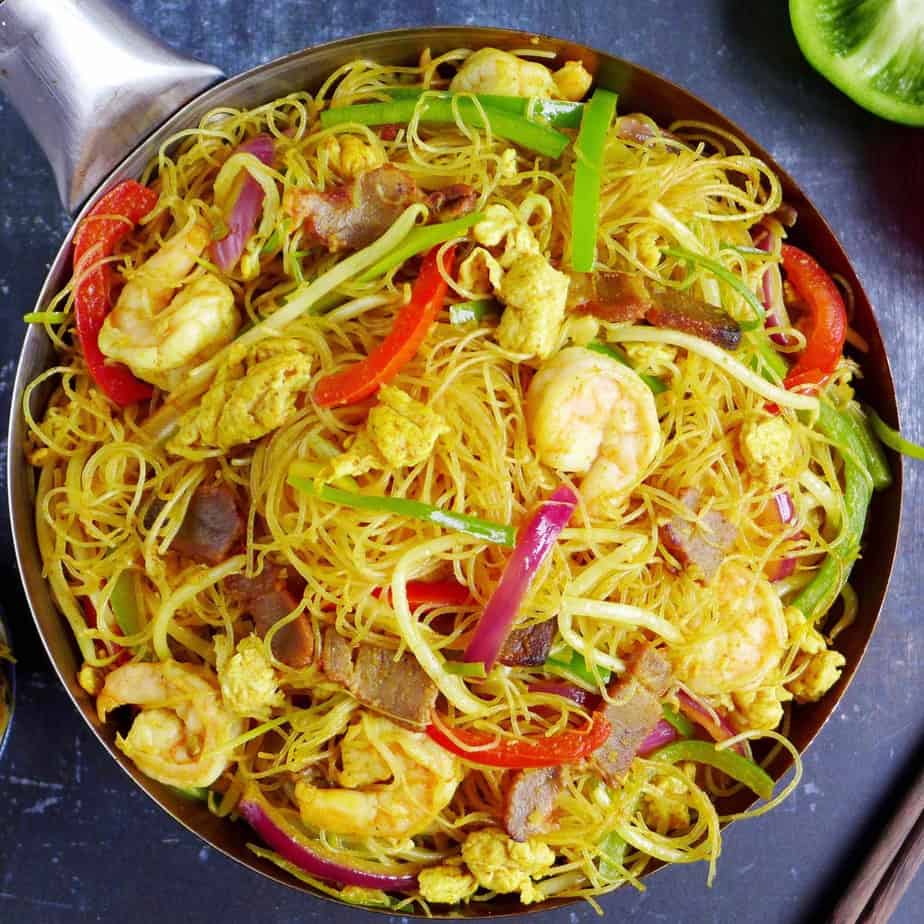
I usually retain the leftover marinade. It can be heated then used in several different ways: Pour it over Char Siu rice, mix with noodles, season some vegetable stir-fries, or use it as a soup base.
Other pork recipes
I have some other pork-based classic Chinese dishes on the blog. Check them out if you are interested:
- Red-cooked Pork Belly (红烧肉)
- Hunan Pork Stir-fry (湖南小炒肉)
- Peking Shredded Pork (京酱肉丝)
- Chinese Pork Burget (肉夹馍)
- Sichuan Twice-cooked Pork (回锅肉)
- Pork Belly Bao Buns (刈包)
📋 Recipe
Love this recipe? Please leave a 5-star 🌟🌟🌟🌟🌟 rating in the recipe card below & if you REALLY like it, consider leaving a comment as well!
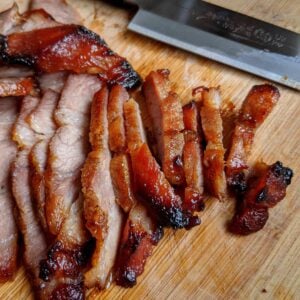
Easy Char Siu (Chinese BBQ pork, 叉烧)
Ingredients
- 2 pork shoulder steaks (aka pork butt) - about 350g/12oz, see note 1
For the marinade
- 4 tablespoon Char Siu sauce - see note 2
- 1 tablespoon oyster sauce
- ½ tablespoon light soy sauce
- ¼ teaspoon Chinese five-spice powder
- 4 cloves garlic, finely sliced
- 5 slices ginger
- ½ teaspoon chilli powder - optional, see note 4
You also need
- 2 teaspoon honey
Instructions
Marinate the meat
- Put pork steaks in a resealable plastic bag. Add all the ingredients for the marinade.
- Squeeze out air then seal the bag. Rub around for an even coating. Store in the fridge for at least 6 hours (ideally overnight).
- Take the meat out of the bag right before roasting. Keep the marinade for later use.
Prepare for roasting
- Preheat the oven at 425°F/220°C/Fan 200°C.
- If using a baking tray with a wire rack that fits inside, fill the tray with hot water (lower than the rack) and put the steak on the rack. Place the tray in the middle of the oven.
- Alternatively, place a large tray with hot water at the bottom of the oven. Then place the steak on the middle rack of the oven.
Roast & brush (see note 5)
- Leave the meat to roast for 15 mins. Take out and flip it over. Brush some marinade then put back into the oven (Make sure there is always enough water in the tray).
- Cook for a further 10 mins. While waiting, mix 2 teaspoons of honey with 2 teaspoons of the marinade.
- Then increase the oven temperature to 460°F/240°C/Fan 220°C. Take out the meat. Brush with the honey mixture.
- Put back into the oven for 5 mins. Then brush the other side with the honey mixture. Roast for a final 3 mins.
Serve
- Leave the meat to rest for 5 mins then slice and serve it in your preferred way.
- You may also heat up the remaining marinade (remove the garlic & ginger) then serve it as a sauce, a soup base, or a noodle seasoning, etc.
NOTES
NUTRITION
NUTRITION DISCLOSURE: Nutritional information on this website is provided as a courtesy to readers. It should be considered estimates. Please use your own brand nutritional values or your preferred nutrition calculator to double check against our estimates.


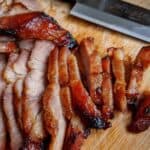
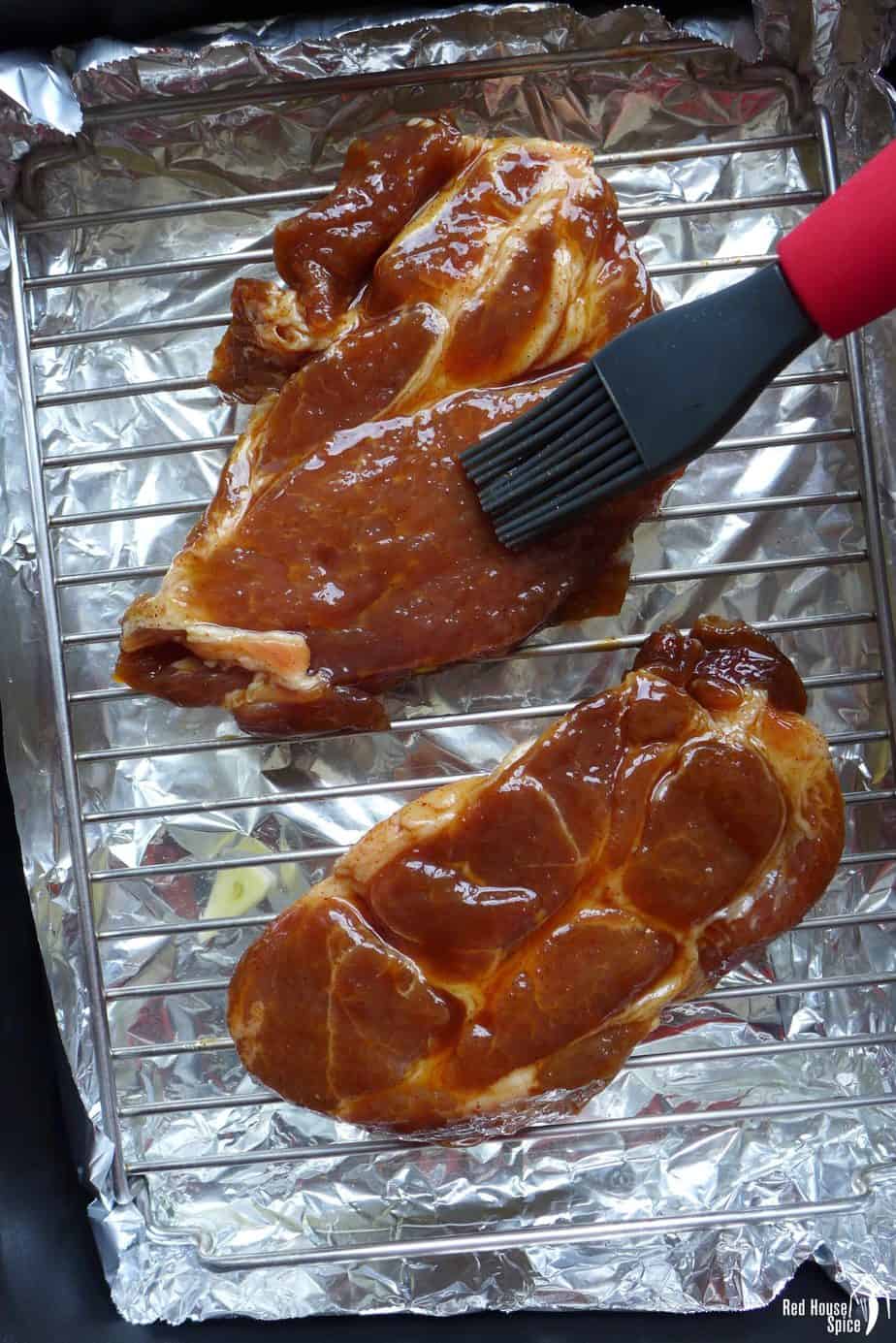
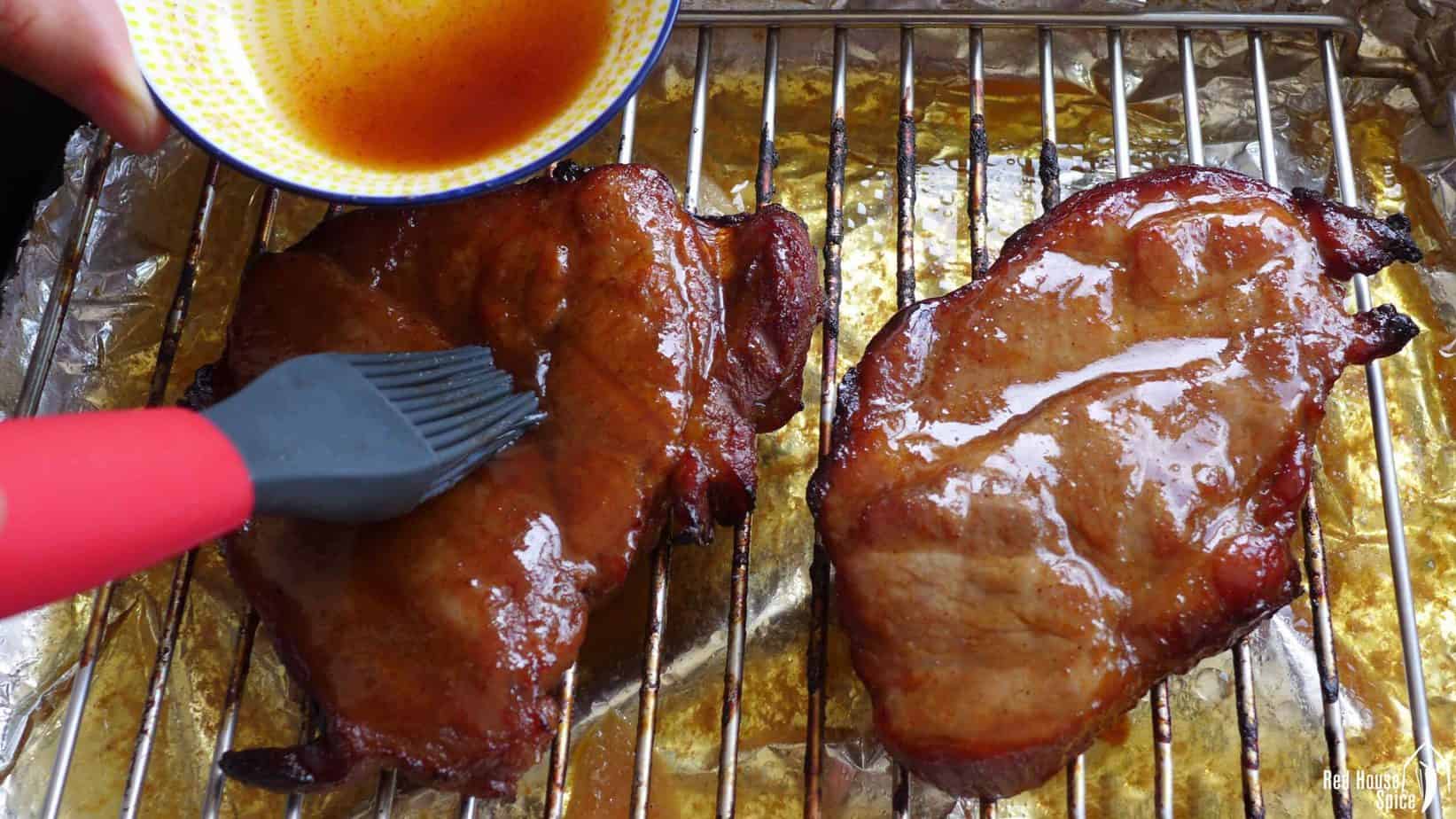

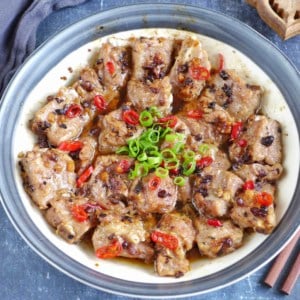

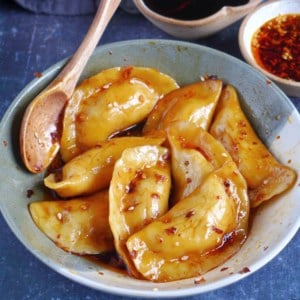
This recipe is a find. The jarred sauce is beautifully enhanced by fresh *sliced* garlic, ginger (which makes them easy to remove before mixing with the honey for the glaze) and other ingredients. On about the third time making this recipe, i decided to debone a small pork butt to make steaks, and by tripling the sauce I finally had enough to feed my hungry boys with some leftovers. So good!! Thank you!
So happy to know you and your family enjoyed the dish, Kara!
just wondering. lee kum char siu sauce lists soy sauce ginger garlic and the same spices in 5 spice powder.. do you find whats in the char siu sauce already is not enough to flavor the meat ?
You can for sure follow the instructions on the package and use the Char Siu sauce only. However, I find the additional ingredients enhance the general taste.
A very simple recipe for Char Sui and yet the result is anything but! It was so good – tender and juicy with authentic Chinese flavour. It was an eye opener as I would not have thought it possible to make Char Sui at home so thank you for an amazing recipe.
I know how you feel Anna! I also used to think it would be very difficult to make Char Siu at home. So happy to know you liked my recipe.